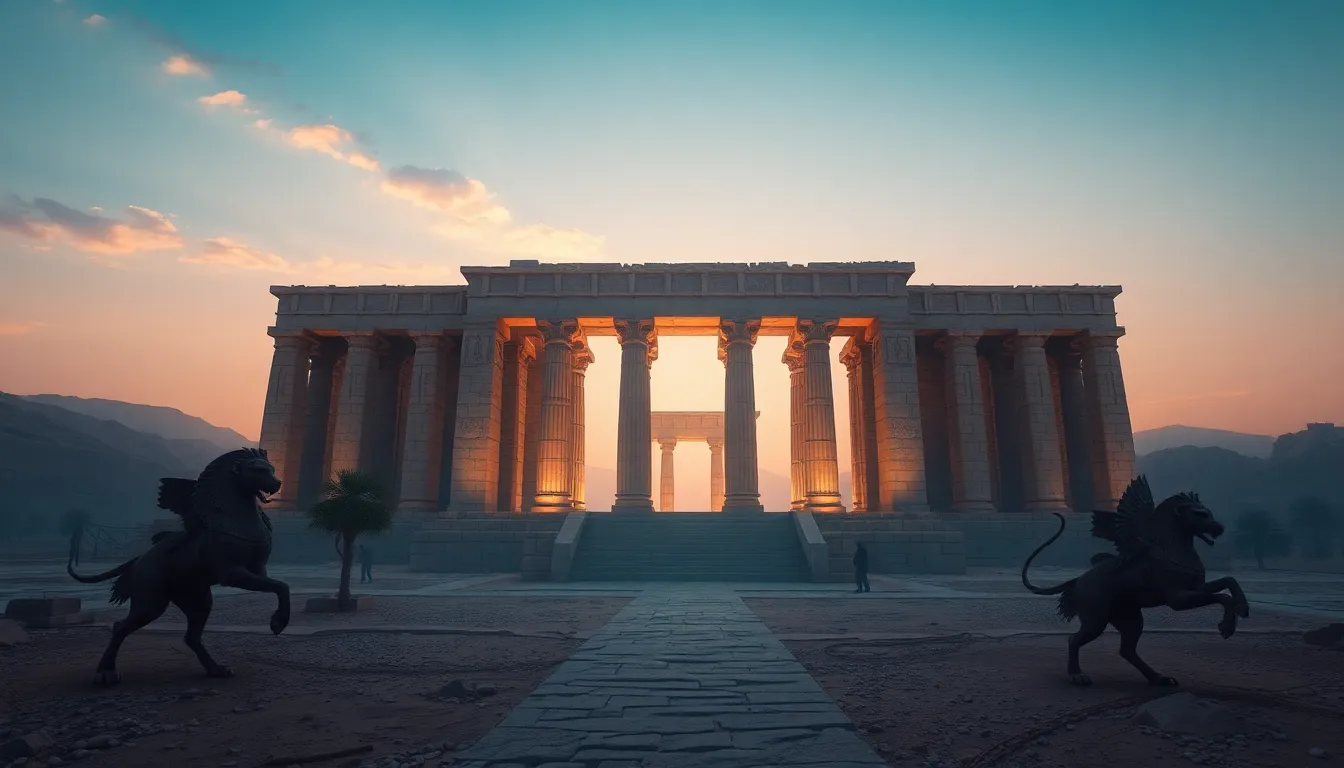The Sacred Geography of the Temple of Geb
I. Introduction
The Temple of Geb is a significant structure in ancient Egyptian mythology, dedicated to the earth god Geb. Its importance expands beyond mere architecture; it represents the essence of sacred geography in ancient cultures. Sacred geography refers to the mapping of divine spaces that hold spiritual significance, influencing the beliefs and practices of a community. This article aims to explore the historical context, geographical symbolism, architectural features, rituals, societal roles, and preservation efforts related to the Temple of Geb.
II. Historical Context of the Temple of Geb
The Temple of Geb has its origins rooted in the early dynastic period of ancient Egypt. Established as a place of worship, it became a central hub for the veneration of Geb, who was considered the father of Osiris, Isis, Seth, and Nephthys. Geb’s role in ancient Egyptian mythology as the god of the earth made this temple a vital part of the cultural landscape.
Historically, the temple served not only as a religious site but also as a reflection of the agricultural society that depended on the fertility of the land. The reverence for Geb emphasized the connection between the divine and the earth, highlighting the significance of agriculture in sustaining life in ancient Egypt.
III. Geographical Location and Its Symbolism
The Temple of Geb is strategically located in the heart of ancient Egypt, often placed near the fertile banks of the Nile. This location was not arbitrary; it symbolized the nurturing nature of the earth god. The surrounding landscape, characterized by lush greenery and agricultural fields, reinforced Geb’s association with fertility and renewal.
The geographical features of the site also carried symbolic meanings:
- The Nile River: Seen as the lifeblood of the land, the river’s annual flooding was believed to be a blessing from Geb.
- The Desert: Represented the chaotic forces that Geb tamed through the fertility of the land.
- The Horizon: Symbolized the boundary between the earthly realm and the divine, highlighting Geb’s role as a mediator.
IV. Architectural Features of the Temple
The architecture of the Temple of Geb is a testament to the artistic and engineering prowess of ancient Egyptians. The design and layout of the temple were meticulously planned to reflect Geb’s attributes. Key architectural features include:
- Pillared Halls: Grand halls with towering columns, symbolizing the strength of the earth.
- Sacred Altars: Spaces designated for offerings and rituals, emphasizing the importance of reverence in worship.
- Statues of Geb: Carvings and statues depicting Geb in various forms, showcasing his significance in the pantheon.
Each architectural element was not only functional but also infused with symbolic meaning, creating a sacred space that resonated with the divine presence of Geb.
V. Ritual Practices and Sacred Activities
The Temple of Geb was a bustling center of religious activity, where various rituals were conducted to honor the earth god. These rituals included:
- Harvest Festivals: Celebrations that marked the agricultural cycles, emphasizing the gratitude towards Geb for bountiful harvests.
- Ritual Offerings: Offerings of crops, incense, and other goods were made to appease Geb and ensure fertility.
- Seasonal Ceremonies: Events aligned with the agricultural calendar, reinforcing the connection between the divine and the earth.
The priests and priestesses played a crucial role in these rituals, acting as intermediaries between the people and the divine. Their responsibilities included maintaining the temple, conducting ceremonies, and ensuring the sacred space remained pure.
VI. The Temple’s Role in Ancient Society
The Temple of Geb was more than a religious site; it was a focal point for community engagement. The temple facilitated:
- Worship Practices: Regular gatherings for communal worship helped strengthen the bonds among community members.
- Economic Impact: The activities tied to the temple contributed to the local economy, with agricultural festivals attracting visitors and trade.
- Center of Knowledge: The temple served as an educational hub, where knowledge of agriculture, astronomy, and medicine was shared.
In this way, the Temple of Geb was integral to the social, economic, and spiritual fabric of ancient Egyptian society.
VII. Preservation and Archaeological Insights
Today, the Temple of Geb stands as a testament to ancient Egyptian civilization, though much of it has succumbed to the ravages of time. Current preservation efforts focus on:
- Site Maintenance: Ensuring the structural integrity of the remaining ruins.
- Archaeological Research: Ongoing excavations reveal insights into the temple’s history and significance.
- Public Education: Informing visitors about the temple’s historical and cultural importance through guided tours and exhibitions.
Archaeological findings continue to shed light on the rituals, daily life, and the reverence the ancient Egyptians had for Geb, enriching our understanding of their culture.
VIII. Conclusion
The Temple of Geb is a profound symbol of sacred geography, representing the intricate relationship between the earth and the divine in ancient Egyptian belief. Its impact on society, through rituals, community engagement, and economic activity, underscores the significance of sacred spaces throughout history. Today, the temple serves as a reminder of the rich cultural heritage that connects us to our past. The preservation of such sites is crucial, not only for historical understanding but also for appreciating the enduring legacy of sacred geographies in shaping cultural identities.




